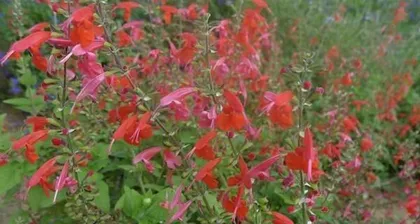As a common flower, safflower is beloved by many enthusiasts for its beautiful blossoms and good adaptability. However, to ensure safflower grows healthily and blooms, it is necessary to master some planting techniques and precautions. This article will detail how to successfully care for safflower.

Selecting Safflower
When selecting safflower, choose healthy, robust seedlings free from pests and diseases. Also, pay attention to observing the color and shape of the leaves, as well as the development of the buds.
Suitable Environment for Safflower
Safflower thrives in conditions with ample sunlight and good ventilation. The soil should also have good drainage and fertility, while maintaining soil moisture is important.

Transplanting Safflower
Transplanting safflower should be done in spring or autumn. Before transplanting, soak the roots in water to reduce damage to the plant.
Pruning Safflower
Pruning should be done after the flowering period to promote branching and robust growth, and to control the plant's height and shape.
Watering Safflower
Watering safflower should be kept moderate, avoiding too much or too little water. Also, avoid waterlogging at the bottom of the pot, which can affect the plant's growth.

Fertilizing Safflower
Fertilizing safflower should be done according to different growth stages. It is also important to choose the right fertilizer and amount to avoid over-fertilization or nutrient deficiency.
Pest and Disease Control for Safflower
Safflower is susceptible to some pests and diseases, so timely measures are needed for control. Biological herbicides or chemicals can be used, as well as physical methods such as cutting off infected parts.
Insulation Measures for Safflower
In cold winters, certain insulation measures should be taken, such as covering with plastic film or straw mats, to protect safflower from severe cold.
Propagating Safflower
Safflower can be propagated by cuttings, division, and seeds. It is important to choose the right propagation method and time to ensure success.
Dormancy Period for Safflower
During its growth, safflower needs a dormancy period to accumulate nutrients and energy. In winter or other suitable times, reduce fertilizing and watering.
Companion Planting with Safflower
Safflower can be planted with other flowers, such as white or yellow ones, to enhance the visual effect and aesthetics.
Uses of Safflower
Safflower can not only be used as an ornamental plant but also in food, medicine, and other fields. When planting safflower, choose suitable varieties and techniques based on its intended use.
Harvesting Safflower
After safflower blooms, the flowers can be picked to make various products like dried flowers or flower tea. They can also be processed to extract pigments.
Market Prospects for Safflower
As the demand for health and beauty increases, the market prospects for safflower are becoming broader. Therefore, it can also be considered as a commercial crop.
This article details the planting techniques and precautions for safflower, including selection, suitable environment, transplanting, pruning, watering, fertilizing, pest and disease control, insulation, propagation, dormancy, companion planting, uses, harvesting, and market prospects. It is believed to be of great reference value for enthusiasts.